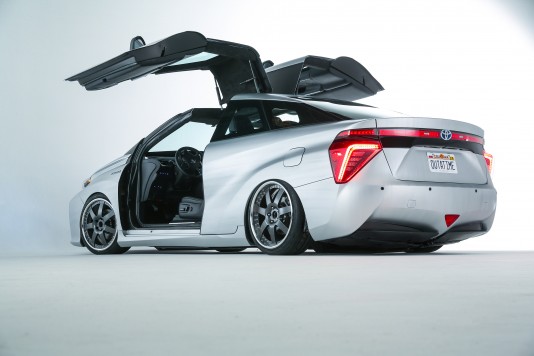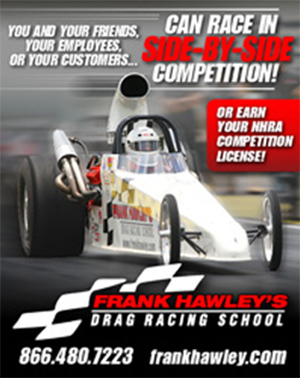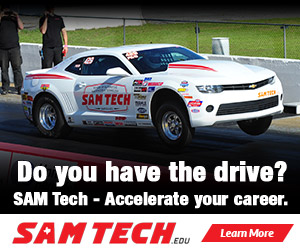
WFO is all about cars and racing, so of course that includes technology. Sometimes themes come together, as the folks at Toyota show off their concepts for the future of transportation. We all know that the future is coming. Hopefully. But, what will it look like? We we be driving our own pods, or will they be driving us? It’s nice to see some concepts that give us an idea of where we are going. Or, where we want to avoid. Check out the release below, then go to the podcast archive and check out one of the shows.
DETROIT – It’s the midway point of the second decade of the 21st century, and future mobility is beginning to come into sharp focus. Technology advancements are ushering in a wave of new conceptual ideas for how people might be transported in the long term, with a focus on clean power, greater safety and more convenience. The Toyota exhibit at the 2016 North American International Auto Show (NAIAS), from January 16-24 in Detroit, provides a glimpse at this transformational change to mobility while showing off the full line of new cars, trucks and SUVs available today. Fresh off of announcements at CES (Consumer Electronics Show), which revealed Artificial Intelligence (AI) and robotics research plans by the new Toyota Research Institute Inc. (TRI) and the commercialization of a telematics system using SmartDeviceLink, Toyota arrives in Detroit to showcase its vision of the connected car and future mobility. It will make a connected technology development announcement on Tues., Jan. 12. Toyota will use exhibit displays to tell its AI story. One exhibit has small moving vehicles on a table that learn how to drive in a congested environment. In addition to the Mirai, the groundbreaking fuel cell electric vehicle powered by hydrogen that began sales in California last year, Toyota will show the FCV+ concept vehicle. The concept vehicle demonstrates Toyota’s vision of a connected, sustainable hydrogen society. It is capable of generating electricity directly from hydrogen stored outside the vehicle and thus operating as a stable source of electric power for use at home or on the go. The Toyota KIKAI, also on display, explores and emphasizes the fundamental appeal of machines: their fine craftsmanship, their beauty, simplicity, and their fascinating motion. As a true concept car, the Toyota KIKAI’s appeal is simultaneously free from and reliant on the core concepts of automobiles. More broadly, it reminds us of the appeal of the physical and tactile in a digital age. Two of Toyota’s future mobility concepts that are fan-favorites make a return to Detroit. The Toyota i-ROAD, an innovative, fun-to-drive three-wheel personal electric vehicle, has become a bit of a celebrity with the amount of media attention it has received over the past year. The i-ROAD, equipped with revolutionary Active Lean technology that emulates the movements of a skier, is as agile as a scooter with the enclosed-canopy comfort of a car and ideal for congested city centers. The other concept that generates substantial public attention is the FV2, which is operated by the driver shifting his or her body to intuitively move the vehicle in any direction. It uses intelligent transport system technology to connect with other vehicles in the area and traffic infrastructure to enable safe driving. With more than 35,000 square feet of exhibit space, Toyota will display about 40 production and concept vehicles. The all-new fourth-generation 2016 Prius liftback makes its first appearance in Detroit. The new version of this global green icon takes the hybrid concept farther than ever with striking design, with expected higher fuel economy ratings, and greater ride comfort. New levels of driving satisfaction and refinement will reward the Prius faithful and surprise those new to the movement. No look at the future of mobility is not complete without a look “back” to dreams of yesteryear. The “Back to the Future” Tacoma, a re-creation of Marty McFly’s dream truck in the iconic 20th century film series, is coming to Detroit. Toyota created the one-of-a-kind truck to celebrate October 21, 2015 – the futuristic date first introduced in Back to the Future Part II – with a number of modifications to the all-new 2016 Toyota Tacoma for a modern-day version of the classic from the movie. Toyota will also celebrate Kyle Bush’s NASCAR Sprint Cup Series championship with a replica of his #18 race car. Teens and their parents don’t want to miss the TeenDrive365 distracted driving simulator. Oculus Rift virtual reality technology brings the dangers of distracted driving to life. The safety exhibit also includes active safety education using a Corolla to feature functions of several technologies including Blind Spot Monitor and Lane Departure Alert. The Toyota exhibit was designed and constructed by Michigan-based George P. Johnson. About Toyota Toyota (NYSE:TM), the world’s top automaker and creator of the Prius and the Mirai fuel cell vehicle, is committed to building vehicles for the way people live through our Toyota, Lexus and Scion brands. Over the past 50 years, we’ve built more than 30 million cars and trucks in North America, where we operate 14 manufacturing plants (10 in the U.S.) and directly employ more than 42,000 people (more than 33,000 in the U.S.). Our 1,800 North American dealerships (1,500 in the U.S.) sold more than 2.67 million cars and trucks (more than 2.35 million in the U.S.) in 2014 – and about 80 percent of all Toyota vehicles sold over the past 20 years are still on the road today. Toyota partners with philanthropic organizations across the country, with a focus on education, safety and the environment. As part of this commitment, we share the company’s extensive know-how garnered from building great cars and trucks to help community organizations and other nonprofits expand their ability to do good. For more information about Toyota, visit www.toyotanewsroom.com. 




























